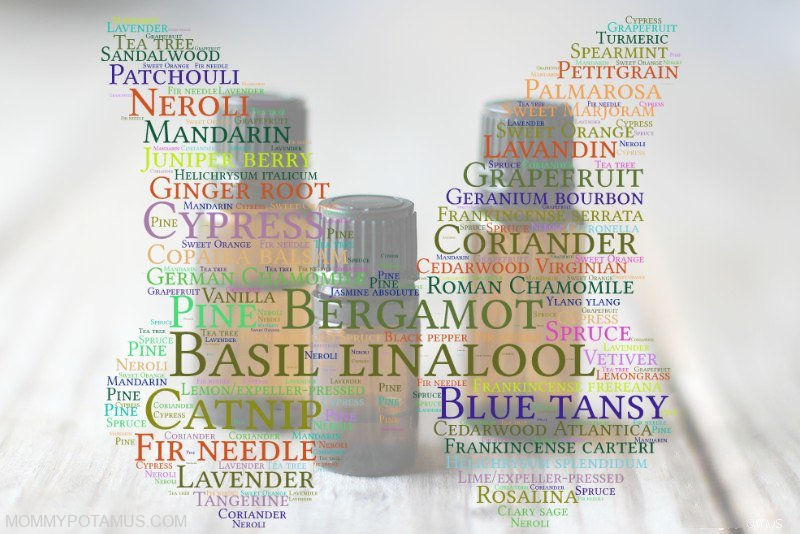
Which essential oils are safe for kids? If you’ve tried to answer that question by researching online lately, you know that there is a ton of conflicting information out there. Some say everything is safe, some say nothing is safe. What’s a mama to do?
A few years ago, I decided to get over my sticker shock and try to answer that question for myself. I purchased a copy of Essential Oil Safety, which was written by world renowned essential oil expert Robert Tisserand and his co-author, Rodney Young. Considered the most evidence-based resource available, Essential Oil Safety took 10+ years to write and contains over 4,000 citations.
Safety is my top priority, so whether it’s this DIY bug bite balm, this “breathe easy” vapor rub, or another natural remedy or beauty recipe, I always consult Essential Oil Safety while creating products for my family and yours.
Of course, there are a lot of essential oil uses I haven’t covered (yet!) here, so I thought I’d put together this handy-dandy guide to when – and when NOT – to use essential oils with children. Based on Tisserand’s work, the guide below covers which essential oils are appropriate based on age and method of use (diffusion or topical application).
I’ve also linked to a brand I love for its quality, commitment to providing safe usage instructions, and pricing.
As always, none of these statements have been evaluated by the FDA, this article is not medical advice, and it is not meant to diagnose or treat any condition. Now that we’ve got that out of the way, let’s dive in.
Why dilute essential oils?
Though there are times when certain oils can be applied undiluted or “neat,” diluting essential oils is generally recommended for topical use, especially for little ones. There are two primary benefits of this approach:
- It may increase absorption by spreading the oil over a larger surface area
- It decreases the likelihood of a negative reaction
In addition to topical application, essential oils can also be diffused into the air. According to Tisserand, inhaling essential oils is a very efficient way to absorb them quickly into the bloodstream, making this form of aromatherapy a preferred method of delivery for many circumstances.
In general, topical application is preferred for skin irritations and other region-specific needs, while diffusion is preferred to support general wellness.
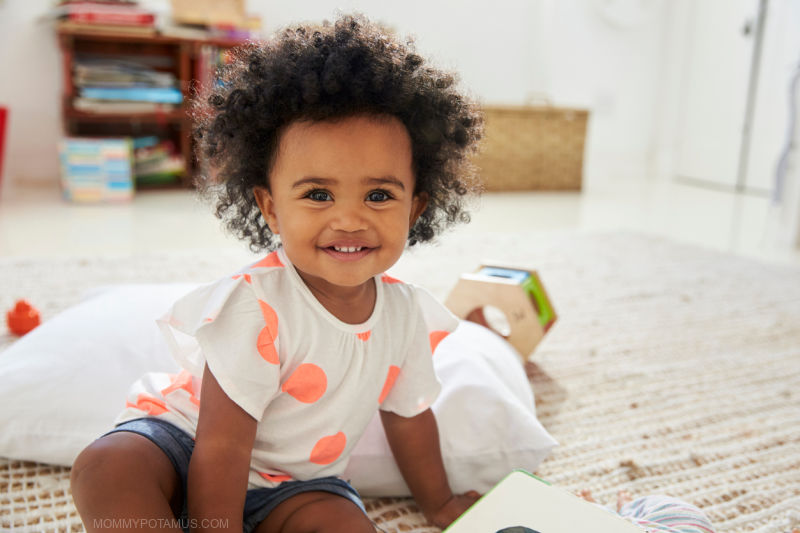
Essential Oils That Are Considered Safe For Children 2 And Under
There are many oils that can be diffused safely or applied topically when used appropriately. The recommended dilution ratio for this age group is .25%, which is 1 drop per 4 teaspoons carrier oil.
I personally would not apply essential oils topically to a child under three months old. As essential oil experts Robert Tisserand and Rodney Young explain:
Great caution is necessary for infants. Since neonatal skin does not mature until three months of age, it is more sensitive and more permeable to essential oils. A newborn is also less equipped to deal with any adverse effects than an adult because of lower metabolic capacity, i.e., enzymes present in lower concentrations. (11) These cautions apply even more to premature babies, and here it would be prudent to avoid all use of essential oils.” (Essential Oil Safety, p. 48-49)
Essential Oils for Diffusing or Topical Application (2 And Under)
Although it is not a definitive list, below are 65 oils that are considering appropriate for diffusing or occasional diluted topical application for kids two and under.
I’ve also included some of the therapeutic properties of each oil alongside its name.
- Amyris (Amyris balsamifera) – Woodsy, calming and stress relieving. Helpful for improving the appearance of fine lines.
- Balsam Fir (Abies balsamea) – Fresh, evergreen scent. Sometimes used in beauty products to support skin texture.
- Bergamot (Citrus bergamia) – Bright, clean, uplifting citrus scent. Bergamot is phototoxic unless you purchase one that is filtered to be bergaptine-free. If not using bergaptine-free, a maximum dilution of 0.4% (about 5 drops in 4 tablespoons carrier oil) is recommended to avoid phototoxicity.
- Bergamot, Mint (Mentha citrata) – Light and citrusy, this oil supports relaxation, mental clarity and healthy respiratory function.
- Black Pepper (Piper nigrum) – Spicy scent, helpful for soothing achy muscles.
- Black Spruce (Picea mariana) – Evergreen aroma, supports healthy respiratory function.
- Blue Tansy (Tanacetum annuum) – Also called Moroccan blue chamomile, this oil has skin soothing properties. It may also promote feelings of being clear-headed when pollen counts are high. May interact with antidepressant medications (MAOIs, SSRIs and bupropion antidepressants) and possibly other medications.
- Blue Cypress (Callitris intratropica) – Fresh and woodsy, helpful for emotional groundedness, easing skin irritations and supporting respiratory function. Not for use while pregnant, if you’re intending to become pregnant, or nursing.
- Cardamom (Elettaria cardamomum) – Spicy and sweet, helpful for fatigue and car/boat associated queasiness.
- Catnip (Nepeta cataria) – Relaxing, helpful for restful sleep and very useful in homemade bug spray.
- Cedarwood, Atlas (Cedrus atlantica) – Calming, skin smoothing, and smells amazing in this Wild Vanilla No. 2 Solid Perfume Recipe.
- Cedarwood, Himalayan (Cedrus deodara) – Smokey and woody, helpful for supporting skin clarity and respiratory function.
- Cedarwood, Texas (Juniperus mexicana) – Woody and sweet, Texas cedarwood is calming, immune supportive, and helpful for keeping summer pests away.
- Cedarwood, Virginian (Juniperus virginiana) – Lovely woodsy scent, relaxing and beneficial for skin. It’s also one of the recommended oils in my children’s vapor rub.
- Chamomile, German (Matricaria chamomilla L) – Relaxing, helpful for sleep, may support clear thinking when pollen counts are high. May interact with antidepressant medications (MAOIs, SSRIs and bupropion antidepressants) and possibly other medications.
- Chamomile, Roman (Chamaemelum nobile) – Relaxing, helpful for sleep, helpful for soothing sore muscles.
- Cinnamon Leaf (Cinnamomum verum) – NOT cinnamon bark. Smells lovely when diffused during the holidays. Can have a warming effect when applied to the skin, but it can cause irritation if too high a concentration is used. The maximum recommended dilution in Essential Oil Safety is 0.6% (about 7 drops in four tablespoons carrier oil)
- Citronella (Cymbopogon winterianus) – Great addition to homemade bug spray, can also be used to make outdoor citronella candles.
- Clary Sage (Salvia sclarea) – Helpful for relaxation and restful sleep.
- Copaiba Oleoresin (Copaifera officinalis) – Supports healthy respiratory function and soothes achy muscles.
- Coriander (Coriandrum sativum) – Soothes upset tummies and calms emotions.
- Cypress (Cupressus sempervirens) – Supports healthy respiratory function, thought to have an emotionally grounding effect during challenging experiences.
- Dill Weed (Anethum graveolens) – Helpful for digestion. Supports immune function. The maximum recommended dilution for this oil is 1.2% (about 7 drops in two tablespoons carrier oil). May interact with diabetes medication.
- Fir, Douglas (Pseudotsuga menziesii) – Clean evergreen scent, helpful for supporting respiratory function.
- Fir Needle (Abies sibirica) – Supports healthy respiratory function.
- Fragonia (Agonis fragrans) – Smells a lot like eucalyptus and supports healthy respiratory function, works well in homemade vapor rub.
- Frankincense Carterii (Boswellia carteri) – Immune support, helpful for soothing cuts, bruises and other injuries, relaxing, also thought to promote youthful looking skin.
- Frankincense Frereana (Boswellia frereana) – Immune support, helpful for soothing cuts, bruises and other injuries, relaxing, also thought to promote youthful looking skin.
- Frankincense Serrata (Boswellia serrata) – Calming, thought to promote youthful looking skin. Maximum recommended topical use is 3% (3 drops per teaspoon of carrier oil).
- Geranium Bourbon (Pelargonium x asperum) – Very helpful in homemade tick spray.
- Ginger Root CO2 Extract (Zingiber officinalis) – Helpful for digestion and soothing sore muscles. Maximum recommended topical use is 1% (1 drop per teaspoon of carrier oil).
- Grapefruit, Pink (Citrus x paradisi) – Uplifting. Can cause photosensitivity. Maximum recommended topical use is 4% (4 drops per teaspoon of carrier oil).
- Green Mandarin (Citrus reticulata cv mandarin) – Sweet and citrusy, green mandarin is calming and uplifting.
- Helichrysum Italicum (Helichrysum italicum) – Considered one of the top oils for promoting youthful skin, helpful for scars, and supportive of the immune system. Rare and somewhat expensive.
- Juniper Berry (Juniperus communis) – Calming, supports healthy respiratory function.
- Lavandin (Lavandula x intermedia) – Although it does not have the same therapeutic properties as true lavender, it does have a similar scent.
- Lavender (Lavandula augustifolia)- Calming, helpful for soothing bug bites, sunburns, and other skin irritations.
- Lemon, Expeller-Pressed (Citrus x limon) – Mood lifting, supports immune function. Can cause photosensitivity. Maximum recommended topical use is 2% (12 drops in two tablespoons carrier oil).
- Lemon, Steam Distilled (Citrus x limon) – Refreshing, citrusy and energizing, steam distilled lemon essential oil is not phototoxic like its expeller-pressed counterpart.
- Lime, Expeller-Pressed (Citrus x aurantifolia) – Uplifting, supports immune function. Can cause photosensitivity. Maximum recommended topical use is 0.7% (about 4 drops in two tablespoons carrier oil).
- Lime, Steam Distilled (Citrus x aurantifolia) – Same therapeutic properties as expeller-pressed lime essential oil, but it has been steam distilled and is therefore not phototoxic.
- Lemon Eucalyptus (Eucalyptus citriodora) – Mood lifting, supports healthy respiratory function, and can also be used in homemade bug spray.
- Mandarin (Citrus reticulata) – Sweet, citrusy, and calming.
- Manuka (Leptospermum scoparium) – Helpful for easing topical irritations, including dry skin.
- Marjoram, Sweet (Origanum majorana) – Relaxing, helpful for sleep.
- Melissa (Melissa officinalis) – Lemony and fresh, melissa is helpful for lifting mood. Maximum recommended topical dilution is 1% (1 drop in 1 teaspoon carrier oil).
- Neroli (Citrus x aurantium var.amara) – Often used in skincare products due to its ability to promote beautiful skin. Thought to be helpful for easing emotional tension.
- Orange, Blood (Citrus sinensis) – Sweet, citrusy and mood lifting.
- Orange, Sweet (Citrus sinensis) – Sweet, citrusy uplifting aroma.
- Palmarosa (Cymbopogon martinii var motia) – Digestive support, skin soothing.
- Patchouli (Pogostemon Cablin) – Thought to promote the appearance of youthful skin. Great addition to men’s personal care products, like homemade deodorant or body wash.
- Petitgrain (Citrus x aurantium) – Thought to be beneficial for skin, especially oily skin.
- Rosalina (Melaleuca ericifolia) – Supports healthy respiratory function (similar to eucalyptus).
- Rose Absolute (Rosa x centifolia) – Rich and floral, helpful for relaxation and reducing the appearance of fine lines. Maximum recommended topical dilution is 2.5% (15 drops in two tablespoons carrier oil).
- Sandalwood, Australian (Santalum Spicatum) – Calming, thought to be helpful for oily skin.
- Scots Pine (Pinus Sylvestris) – Supports healthy respiratory function and soothes sore muscles.
- Sea Fennel (Crithmum Maritimum Oil) – Prized for its ability to support skin renewal.
- Spearmint (Mentha spicata) – Similar to peppermint, but safer for use with small children. Helpful for digestion. Maximum recommended topical use is 1.7% (about 10 drops in two tablespoons carrier oil).
- Tangerine (Citrus reticulata) – Immune support. Bright, uplifting citrus scent.
- Tea tree (Melaleuca alternifolia) – Immune support, helpful for cuts and scrapes. Also considered helpful for promoting smooth, clear skin.
- Turmeric rhizome CO2 extract (Curcuma longa) – Soothes joint discomfort
- Vanilla CO2 extract (Vanilla planfolia) – Smells amazing in this vanilla body spray recipe, which I spritz on my kids hair after they bathe.
- Vetiver (Vetiveria zizanoides) – Relaxing and emotionally grounding. Wonderful in this homemade beard oil recipe.
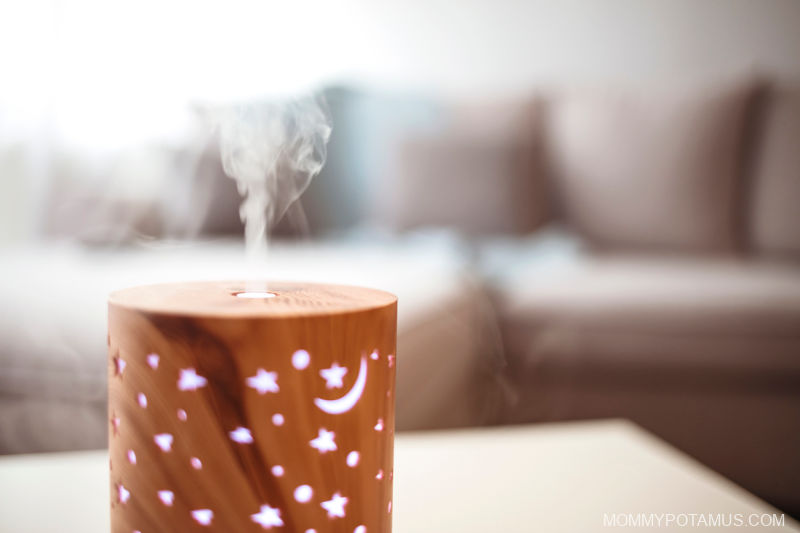
Essential Oils for Diffusing (2 And Under)
These oils are too potentially irritating for topical application, but are considered safe for diffusing.
- Jasmine Absolute (Jasminum sambac) – Calming, floral scent
- Lemongrass (Cymbopogon flexuosus) – Clean citrus scent, great addition to homemade bug spray
- Ylang Ylang (Cananga odorata) – Relaxing, helpful for destressing
Special Case: Eucalyptus Radiata and Eucalyptus Globulus
There’s been a lot of controversy about whether or not eucalyptus – which contains a constituent called 1.8 cineole – is safe for use with children. Too much can sometimes act negatively on the temperature receptors of children’s lungs and cause slowed breathing, so it’s often avoided.
However, for children under three, Robert Tisserand says that eucalyptus globula and radiata can be diffused (1-2 drops) and applied topically at a concentration of 0.5% (2 drops in 4 teaspoons carrier oil).
“I believe these guidelines are super-safe, if anything a little over-cautious. If you’re wondering about other types of eucalyptus oil, E. citriodora is safe for young kids, though is less likely to be therapeutic, and the safety of E. dives is uncertain,” he wrote on his Facebook page.
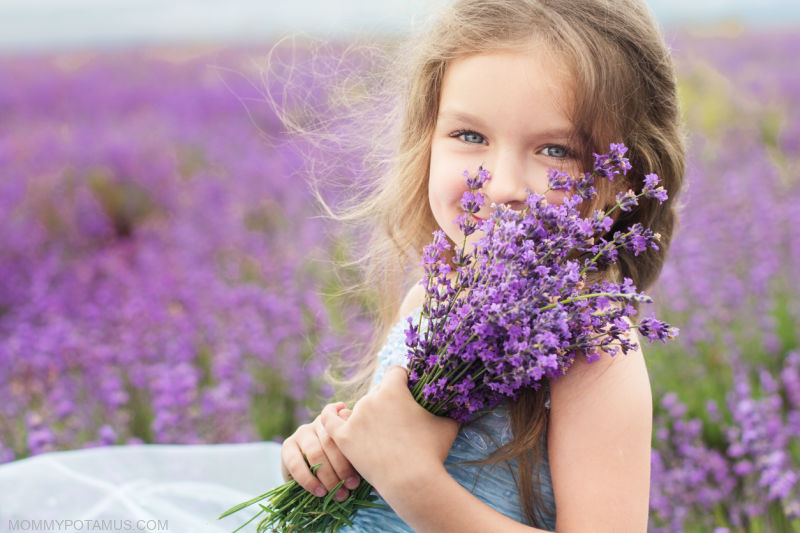
Essential Oils That Are Considered Safe For Children 2-6
All the oils listed above are also considered safe for children ages two to six. In addition, some of the oils designated previously designated as “for diffusing only” can be applied topically – when properly diluted – after age two: )
- Jasmine Absolute (Jasminum sambac) – Max recommended dermal use is 0.7% (about 4 drops in two tablespoons carrier oil).
- Lemongrass (Cymbopogon flexuosus) – Max recommended dermal use is 0.6% (about 7 drops in four tablespoons carrier oil).
- Ylang Ylang (Cananga odorata) – Max recommended dermal use is 0.8% (about 5 drops in two tablespoons carrier oil).
Special Case: Peppermint and Eucalyptus Essential Oils
Another favorite oil for respiratory support is peppermint (Mentha x piperita), which like eucalyptus contains the constituent (1.8 cineole) that sometimes acts negatively on the temperature receptors of children’s lungs and causes slowed breathing.
According to Robert Tisserand, for kids 3-6 years old peppermint can be applied topically at a concentration of 0.5% (2 drops in 4 teaspoons carrier oil) or diffused with care. In the comment section of the above post, he clarified that “with care” means about two drops in an essential oil diffuser.
For eucalyptus, he recommends a 1% maximum dilution of eucalyptus globula or radiata (1 drop in 1 teaspoon carrier oil) for children ages three to six.

Essential Oils That Are Considered Safe For Children 6 to 10
All the oils listed above are also considered safe for children ages six to ten. In addition, some of the oils designated previously designated as “for diffusing only” can be applied topically – when properly diluted – after age six.
Peppermint, eucalyptus radiata, and eucalyptus globulus can be topically applied at a dilution ratio of 1.5% (1 drop per teaspoon of carrier oil).
Rosemary (Rosmarinus officinalis) is also considered appropriate after age six. The recommended maximum topical dilution is 4% (4 drops per teaspoon carrier oil) .
Want more research-backed natural remedies?
No problem, I’ve created a free ebook for you – Kitchen Apothecary: 25+ Natural Remedies Using Ingredients From Your Pantry – as a gift for signing up for my newsletter. You’ll also get updates when I post about safe essential oils for pregnant/breastfeeding mamas, exclusive gifts and coupons (I was able to give away a jar of free coconut oil to anyone who wanted it recently!), plus other goodies.
Sign up using the form below.
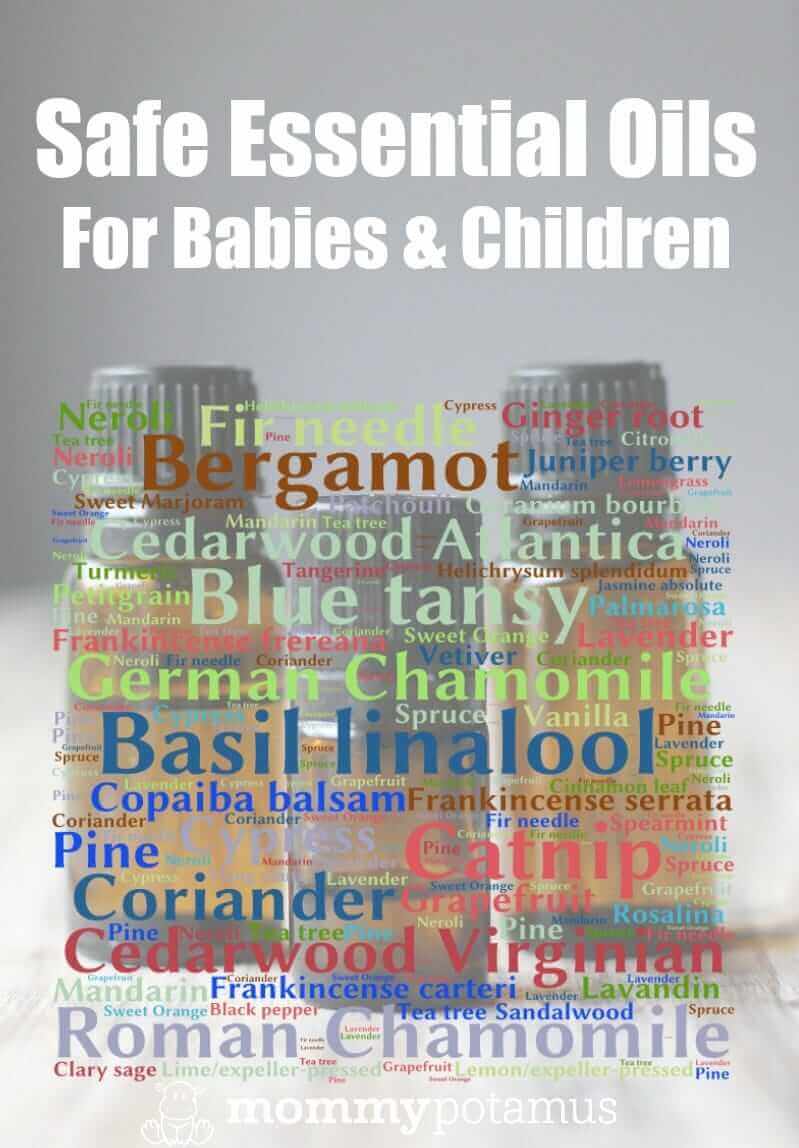

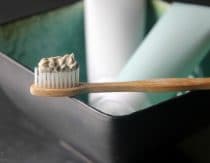
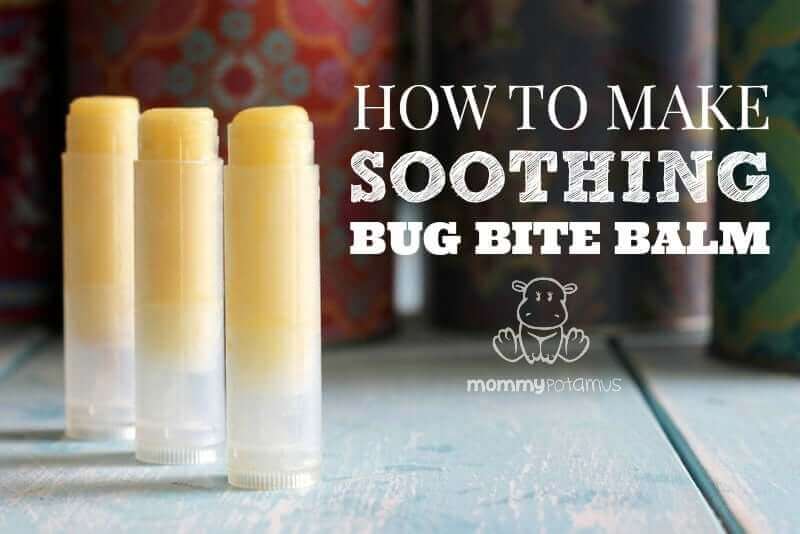
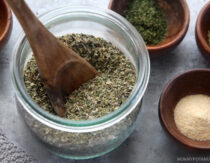

I’m not sure I have ever gotten around to sharing this, but I just wanted to say thank you for advocating for safe practices with essential oils. Part of the reason I have continued to read your blog was your open and honest change from the MLM essential oil company you began with to a company with more responsible advertising. It is a rare thing indeed to find someone who is so diligent and honest in their research. Thanks so much and keep up the good work!!!
Was there a post about the change from MLM? Can you help direct me there? Thx
What a great post. So much information out there that it can get confusing. Thanks for simplifying .
Thank you for sharing. I have a small child and do alot of research about EVERYTHING And it’s frustrating on which blog to believe or trust. So thank you for doing such deep and honest research before sharing. Yours was the first in a long time I’ve actually read every word to the last. Thanks again
Thank you so much for taking the time to compile the information in the article and all of the research involved. We, too, appreciate the health benefits of essential oils and the ability to address health concerns naturally. I am very interested in the printable list, but when I sign up for the newsletter and click on the link for the printable, I receive a “not found, 404” message. Any advice?
Thanks for a great list! I think there may be a typo on the dilution for pink grapefruit oil though. I’ll be printing this for sure!
Glad you found it helpful, Ashley! I just checked the dilution for grapefruit and it is correct. However, although some blends have to be made up with a large amount of carrier oil, I realized just now that this one could be broken down into a much smaller overall amount (4 drops per teaspoon of carrier oil). Just updated the post. 🙂
I have a nine month old with severe eczema and wanted to make a blend of almond oil (carrier oil) with chamomile and lavender. What is the appropriate ratio for a kid his age? Thank you!
Hi Diane, you may find this post on diluting essential oils helpful.
Hi Mommypotamus,
I tried signing up for the Free Guide to Safe Essential Oils, but it said that the link had been taken down already. Is there a possibility for me to get it another way?
Thank you!
Brittney
Is oil of oregano considered an essential oil? Is it safe to use for children? Thank you.
Oregano oil is an emmenagogue, which means it can induce menstration….definitely not something you want while pregnant. I wouldn’t worry about eating lasagna with a bit of whole oregano, but I strongly advise against the use (topically or internally) of oregano oil, even diluted oregano oil during pregnancy. If you aren’t pregnant it is great for skin infections and skin growths, but if you are pregnant steer clear. I tend to steer clear of this one for little ones as well as even diluted it has a tendency to burn and sometimes peel.
I used it through out pregnancy heavily and it helped me avoid antibiotics for a uti and I was able to avoid antibiotics and seeing a dentist for a bad cavity. It was important to me ton try to avoid an x-ray if possible while pregnant.
How much oil of oregano did you use during pregnancy?
I have been so nervous becuase I used oil of oregano also for an infection instead of antibiotics last week & now I keep reading it could be harmful to my baby. I am
In my 2nd trimester.
Should oil of oregano also be avoided while breastfeeding? Thanks!
Are you talking about Oil of Oregano that is sold as a supplement or the actual Oregano Oil essential oil?
Oil of Oregano is different that Oregano essential oil. Oil of Oregano is an oil infused with the part of the Oregano plant. Oregano essential oil is the oil solely from the plant and much stronger and concentrated. Some consider oregano to be an abortifacient herb as it can induce menstruation. Limited to moderate use in pregnancy is advised. As always check with a certified herbalist and your doctor when using any questionable herb in any form.
What about oils that are calming for use when pregnant? DIL usually takes meds for adhd, but can’t while pregnant and needs something to help her!
Anyone know if thieves is safe for children under 2? Thanks
Anything I’ve ever been able to find on this days No.
Even diffusing? Oh man
Thank you for sharing. I have a small child and do alot of research about EVERYTHING And it’s frustrating on which blog to believe or trust. So thank you for doing such deep and honest research before sharing. Yours was the first in a long time I’ve actually read every word to the last. Thanks again
I diffuse lavender pretty much every day in the evening with my (under) 2 year old running around. Lavender wasn’t listed, does this mean it’s not safe to diffuse lavender for children under 2? ? I also occasionally dilute lavender in magnesium oil and put it on her little feeties to help her sleep…
Lavender is listed in the category of oils considered appropriate for use with children under two. 🙂
One section says Oils that are safe under two and the other section below says essential oils safe under two. Is that all one list? I’m a bit confused.
Hi Cheri, there are two categories:
1. Essential oils that are considered safe for diffusing and limited topical application for children 2 and under
2. Essential oils that are only considered safe for diffusing (not topical application) for children 2 and under.
Hi I am also confused about this. Surely all of the oils in list one should be in list 2 also? With the addition of three that are not appropriate for topical application? Or are you saying none of the essential oils in list one are considered safe for diffusing ? Perhaps I could phrase my question better. I want to diffuse oils in my home and I have a 2 month old baby…. which list should I look at? List one or list 2?
List one and two are both considered appropriate for diffusing around children under two. List two is not considered appropriate for topical application. Hope that helps!
I’d stay clear of lavender… Why chance it if it’s questionable hormone disrupters…
How do we get the printable guide please? I’m already on your newsletter list.
Hi Jeanette! I’m double checking on this but I think you can just enter your email address and the form will recognize that you’re already a subscriber and give you the download. 🙂
Looking for the download of the essential oil safety list.
Thanks,
D
You did do an awesome job in writing all this down!! If I can only make a suggestion for the future to also write if they can be taken pure or diluted.
I hope you are doing great.
Ana
Is balsam fir needle oil safe to diffuse for young children in place of other fir needle oils?
Hi, thanks for the information! What about myrtle? many says it’s safe for baby, but i also read at some blog about safety eo that it’s not safe for baby. Thanks
I have used diluted peppermint oil on my children’s feet during a fever to bring down the temp and help them rest. Would you say to avoid this for a child under two?
What’s listed as Spruce essential oil (Tsuga canadensis) either has the incorrect latin name or the incorrect common name. Tsuga canadensis is Eastern Hemlock. Spruce’s latin name would begin with Picea. Most of the coniferous trees have similar medicinal properties, so it might not matter anyway.
Do you have any info on Spikenard Oil? Thanks!
Can I give my 2+ year old and my 4 year old oregano oil to heal a bacterial infection?
Hi Heather,
I am new to EO, my children 2 and 4 have been sick with runny noses and coughs for almost 2 months now and after trying antibiotics and other medications I have decided to try a natural way of ridding my home of germs. I have heard alot about eucalyptus and thieves oil helping to boost the immune system and get rid of germs. I am just wondering if you have any other EO suggestions that may be better for this age group and if eucalyptus and thieves oil is safe to diffuse around mt children.
Thanks so much!
Hi Heather, Thieves oil is great to diffuse around children. You can also use Myrtle oil which is very gentle. Eucalyptus is great to apply diluted on the feet.
I don’t recommend the use of Thieves-type blends around children for this reason: http://www.usingeossafely.com/what-is-wrong-with-pre-made-thieves-blends-what-makes-thieves-blends-unsafe-what-to-use-instead/
Thank you for the useful information. Is there a safe recipe that could help my 8 months old baby with teething?
Hi Martina, you may find this article from my friend Lea helpful: http://www.usingeossafely.com/essential-oils-for-teething-the-safest-and-most-effective-teething-remedies/
Two questions actually.
First, I diffuse a variety of essential oil blends without diluting them, but I always wait until my kids go to bed before I do so. (They are diffused downstairs and the kids are upstairs with doors closed). Do you think I need to be more wary about what in particular I am diffusing even though the kids are in different rooms? I use one of those vibrating diffusers which seems very powerful.
Second, do you know if oregano oil is safe for kids? My youngest has a number of GI issues and we suspect he is suffering acutely from SIBO. A study by John’s Hopkins recommends a variety of herbals as being equally successful to antibiotics, but I am concerned about using them on my 1.5 year old.
https://www.ncbi.nlm.nih.gov/pmc/articles/PMC4030608/
I use 100% pure peppermint essential oil in my humidifier/defuser 3 drops for my headaches/migraines. My question is is this safe with my 1 &2 year old running around the house?
Hello is neem oil safe to use on babies skin? My baby is 6 month’s old and has ringworm. Neem oil is antifungal but im not sure of its suitability on a babys skin
If I’m remembering correctly I stopped taking neem when I read warnings about taking it while nursing.
Is neem oil safe for a 14 month old on skin?
Hi there,
I believe you are better off using Frankincense oil or Lavender oil diluted in a carrier oil and applied directly to the effected area several times a day. Good luck!
Hi! I want to use your natural home cleaner of water, lavender and rosemary. I have a 16 month old and rosemary is not on the safe list to use around toddlers. Can I use this to clean our home?
Thanks!
I am also curious about if diffusing while children are in another room, and the diffuser is turned off before they enter the room(such as while they are sleeping). I currently have a cold and diffused a blend I bought from the natural food store. It contains eucalyptus, rosemary, peppermint, and hyssop oils.
My son is 6 years old and every winter gets horrible cold with a cough and runny nose that lasts for weeks at a time. I do not want to continue using cold medicine and would like to try more natural things to help. I was thinking about using a diffuser with essential oils at night (this seems to be when his cough bothers him the most and does interfere with his sleeping). Was wondering what I could use and most of the diffusers say to dilute in water. Will that be acceptable as a carrier oil or what can I use in a diffuser to act as a carrier oil. Thanks!
I saw this post and although it’s a bit old I’d thought I’d reply as I have had the same issue with our kids, especially my daughter whos 9. It turned out that the dry air was the problem which made the coughing worse. The tiny little diffuser in the room just wasn’t enough so I bought a large humidifier and continued to diffuse eucalyptus and peppermint in the little diffuser at night in her room (hint: don’t spend a fortune on a diffuser for kids room, Walmart sells these little “personal humidifiers” for about $20.00 or less. They are ultrasonic like any other diffuser and hold a little bit of water and perfect for a few drops of oil, and it works just like any other ultrasonic diffuser. I also mixed about 4 drops of eucalyptus into a tbsp of warm coconut oil and used it on her chest and feet. That seemed to really help. Another trick is to simply put a couple drops of eucalyptus onto a cotton ball and put inside pillow case. Hope this helps someone.
I would like the printable guide for using essential oils for children.
Thank you
I would like download and print safety chart for EO
I would like the printable 🙂
Hey Sarah, when you sign up for the newsletter using the form above you’ll immediately be taken to a page where you can download it by pressing the “Download Now” button.
I would like a printable list please
Hi Shawna, if you’ll enter your first name and email address into the box above (the one with the “Sign Up” button), you’ll get immediate access to the printable list. 🙂
Like the printable list
Sure thing, Bridgette! Just fill out the form at the bottom of the post and you’ll get immediate access to it. 🙂
I’d love the printable list please
I would like a printable list.
I would like the printable list please.
Would like a printable list please.
Would like printable list
Would also live the printable list?
I would like the printable copy, please.
Printable list please
Great article!!
Do you still get this when you sign up for the newsletter? I don’t see it. Thanks!
Yes, you do! When you sign up a page will appear with a big orange button that says “Download Guide.”
i would like a printable list please
Hello,
I have an almost 3 month old daughter who Has trouble staying asleep. I just purchased a diffuser and plant therapy lavender. I plan on only diffusing and not using topically. Are there any precautions I should be aware of? Thank you in advance!
Great post Heather! thank you so much for sharing this.
I would like the printable list please.
Hi Jessica, when you sign up for my newsletter using the form it will take you to a page with an orange button that says “Download Guide” – you can access it there 🙂
Please send me the list. Thanks!
Hello. You mention Fragonia safe for children. After looking into it because of all of its benefits, it seems Fragonia contains cineole as does peppermint and Eucalyptus which is not safe for children. Can you verify this?
It does contain 1.8 cineole, but at a concentration level that is lower than what is found in peppermint, eucalyptus, etc. According to Robert Tisserand, author of Essential Oil Safety, the only caution with fragonia is that it can cause skin irritation if oxidized.
Want printable list
Printable list please
THAnk you for this download. I make A lot of your DYI recipes.
Hello Heather!
I use peppermint in mine cleaner. I have three kids under four so i wonder if its safe to use? I use it to repel bugs. What else could i use of it’s not safe?
Thank you so much for your support!!
want printable list please.
Hi Roberta, when you sign up for my newsletter using the form above you’ll immediately be taken to a page with an orange button that will allow you to download the list 🙂
Please send me a copy of your printed list. Thank you
Printable list please
My 15 month old is always congested…. I purchased eucalyptus oil and a breathe easy oil blend. Welll I diffused and while diffusing my baby seemed to be bothered and her congestion wasn’t improving like I thought it would so I started to research and found your blog and others that suggest not using certain essential oils….. Will she be ok??? What’s best for relieving congestion in a 15 month old?
We take our daughter to a hot and humid bathroom for 20 mins. Close the bathroom door, stop/seal the exhaust, start the shower and let it flow for few minutes. The bathroom will be slightly earm and steamy. This helps a lot.
Printable list please
Would love the printable list, thanks.
printable list please! 🙂
Printable list would be amazing!
I would like a printable list please
Printable guide plz
🙂
Please send me the list. Thanks!
I’d love the printable list. You’re so well informed, I love that.. esepcially that the internet throws you in the vaste land of mistakes…
Oh, I plan on buying Tisserand’s book.. but I always find other things to spend on my money (mainly kids stuff, you know… ) 😀
Thx
Dana
Great blog post. I’ve been wanting to buy Tisserand’s book, but I have been holding off thinking it would be over my head. 🙂
I’d love the printable list. And can you tell me if this is all in the ‘Essential Safety’ book as well, am thinking I’ll buy it…
also… do you know if Siberian Fir is safe for babies? I’ve read it’s great for teething but can’t seem to find any info on its safety in infant use.
Hi Toni, when you complete the signup form for my newsletter you’ll immediately be taken to a page with an orange button that says “Download Guide.” That’s where you’ll find it. 🙂
Please could I have access to the printable list of safe essential oils for children and the dilution ratios.
How do I work out percentages in terms of drops of essential oils?
Do you have a recipe for preventing otitis ?
Hi Cara! When you sign up for my newsletter you’ll be taken to a page with a big orange button that says “download guide.”
Here’s a post on diluting essential oils: https://mommypotamus.com/essential-oil-dilution-chart-guidelines/
And here’s a post on earaches: https://mommypotamus.com/natural-remedies-for-ear-infections/
What volume of tea tree oil per carrier oil would be safe to apply for a 10 week old baby and is it suitable for the face? Many thanks.
I tried to sign up for printable list but it’s giving me an error. Is there any way I can be manually signed up and sent the list? thank you!!
Hi Andrea, I’ll email you a copy now. 🙂
Hi, I would love tge printable list please? Thanks
I’d like to print out the printable list please
Hi Linda, to access the printable list all you need to do is enter your email address in the form at the bottom of the post 🙂
I would love to get a copy of the list of EO’s you have please 🙂
Hi, I’ve been looking into rubbing essential oils as a prophylactic measure for my little girls (1&4), this list is very helpful. Can you please send me the full pdf? Thanks!
would like pdf please
Great article, thank you! I’d love to have a copy of the EO list too!
Thanks for such great researched info. I would love to see a list like that for dogs, as well. I have a Bomb Sniffer K-9 (GSD) and have found he is more sensitive to EO’s than any of my nieces or nephews! Luckily, he picks out for me what he likes and separates those he doesn’t like (his favorites are Lavender and Eucalyptus). One note, I have read that Diffusing is as or sometimes more effective than topical application (minus using it on ones feet) so I highly recommend using a Carrier Oil for diffusing as well. I have no choice with my puppy dog around. Also, I love all of your info you have on your website and I don’t have children of my own but find it very applicable in my own path to a healthier life. Thank you so much for your generosity in providing this to your readers.
Hi! Thank you for this post!! I’d like to know if the Soft Skin blend by Plant Therapy (I found out about this blend in your skin serum recipe to mix with rosehip oil) is safe for pregnant women and for children. I looked up each of the E.O.s in it (lavender, frankincense serrata, lemon, petitgrain, coriander, tumeric, rose absolute) in this post but I don’t see anything about Rose absolute and I wasn’t sure if the tumeric is the same as the one listed above.
Thank you!
Karen
Thank u so much for this information. Can I apply eucalyptus oil to the bottom of my 4 year old’s feet to relieve a stuffy nose?
Good job! I would like the printable list. Thank you.
Hi Sandi, you can access the printable list by filling out the form in the post. As soon as you enter your email address you will see a link to download it.
Just what I was looking for! Thank you so so much for this post 🙂
Hi. I would like a copy please.
Hi Deanna, when you complete the signup form for my newsletter you’ll immediately be taken to a page with an orange button that says “Download Guide.” That’s where you’ll find it.
I would like a copy of your guide
Hi Kathy, when you sign up for my newsletter using the form in the post it will take you to a page with an orange button that says “Download Guide” – you can access it there. 🙂
Would like a guide for the oils that are safe for children. Thanks!
Hi Mimi, when you sign up for my newsletter using the form above you’ll immediately be taken to a page with an orange button that will allow you to download the list.
Hi Heather! Thanks so much for this lovely article on oils that are safe for children. I did sign up for your wonderful newsletter, but I did not see the download link for this particular article. (But thank you for the other 2 downloads that were available.) Would it be possible to get the list of oils that are safe for children emailed to me? I have a new grandbaby (3-months), & my gosh it seems like a LOT of things have changed all around regarding the care & feeding of babies from when my kiddos were little. 🙂
Hi – I love diffusing oils and usually order from Eden’s garden. We now have a 6 month old and I’ve been so hesitant to use oils since he was born. Your post has lots of information and I’m so thankful. I plan on checking out that book you mentioned but appreciate you compiling a list for us busy moms!
I do wonder what oils you would recommend for baby allergies? Our son sleeps fine the first part of the night but ends up starting to cough and starts sounding stuffy and sometimes wakes himself up coughing. Any suggestions on safe oils to diffuse that could help? Thank you.
Very helpful! Thank you
Wow, Heather! Where do I begin? I want to thank you for posting this, it’s such essential information 😉 I think I occasionally heard about Plant Therapy oils, but they were disregarded because of the doTerra and YL ones being considered better and safer. But I will do my research and see if these Plant Therapy oils are not deserving a try. Maybe they are really great, and I say the company thought about the parents forever dilemma of using oils on kids, and created a set of blends designed especially for kids! I’ll have to see if they are available around my area (I live in Europe, Romania), and if they are on the market I think I’m going to give them a try. At least buy some of them and see how they go. I really want to try wild orange and compare it with doTerra wild orange oil. I am not a doTerra health advocate, but I have some of their oils.
Thank you once again for this article full of precious information, I’m only starting with essential oils and I’m digging for more relevant infos about them.
PS. The Vibrant Blue Oils seem really interesting to look into, especially those emotional blends.
xoxo,
Cristina
thank you for the information – I was wondering why cinnamon bark is not safe?
Although a particular toxic constituent has not yet been identified, in Essential Oil Safety the authors state that “When cinnamon bark oil (0.25%, 375 mg/kg) was fed to pregnant mice for two weeks it significantly reduced the number of nuclei and altered the distribution of embryos according to nucleus number.”
how about kava essential oil?
I have a 16 month old and want to know what oils are safe, preferably woodsy scents, for a beard oil and beard balm. He is constantly playing with my beard and I’m concerned about him putting his hands in his mouth after.
This post is extremely helpful; thank you for taking the time to share it. My question is, beyond age 10 are most oils considered safe?
Yes, most are considered safe for diffusing. However, they still need to be diluted when applied topically. Here’s my guide to diluting essential oils.
Thanks so much for all that you do & share! I learn so much from you.
~Mama T
You need to add a “print” button
Can I get a printed copy of this list?
First off, thank you for this amazing information all consolidated.
I use natural flea and tick spray on my pets. A lot of the already made sprays have peppermint oil. I have been making my own, which doesn’t contain peppermint oil. I have a 9 month old so I’m concerned for him to touch the animal or smell peppermint from the dogs. From my understanding, my 9 month old shouldn’t be around peppermint at all, correct, even if it’s on the animals? Thank you! The spray I’m looking at for my dogs is lavender Kin+kind flea and tick spray.
I have a 2-1/2 year old nephew who suffers terribly with Eczema…any success with any oil to calm this poor babies relentless dry-peeling skin and constant itching?…his parents have seeked out numerous doctors ..both medically and Homeo pathic..no real help……..